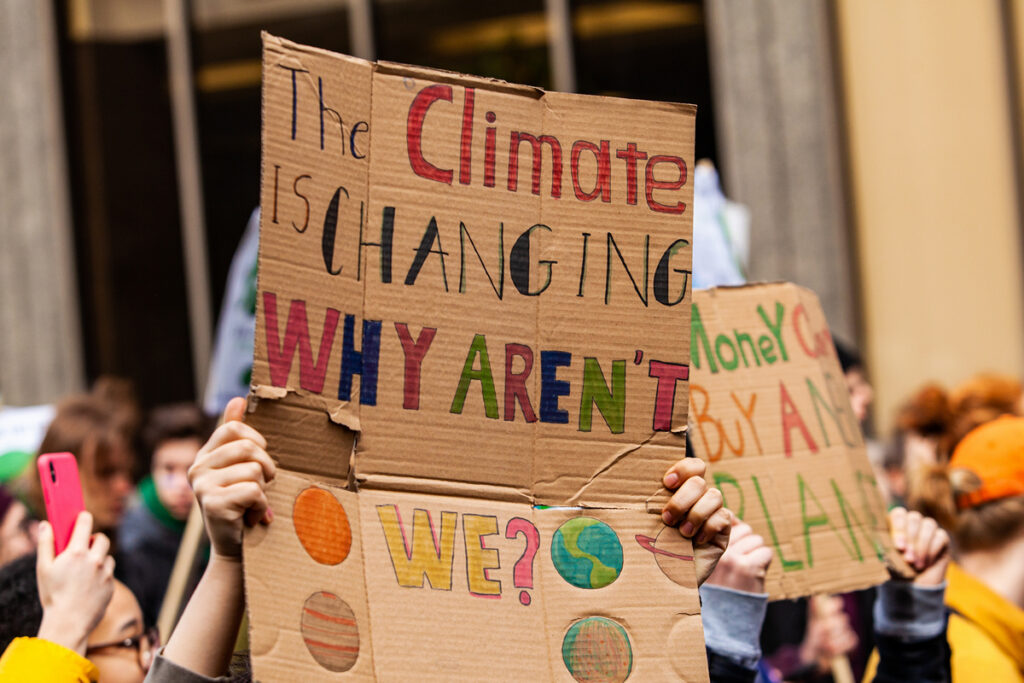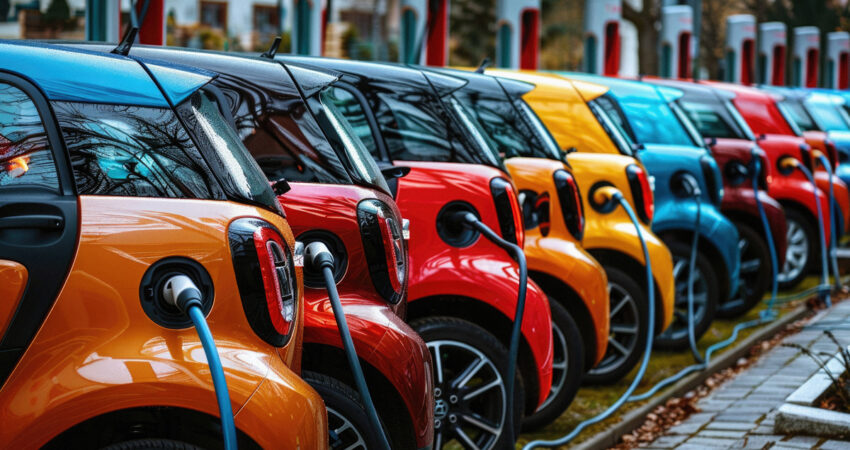Copyright: Adobe Stock #794334174
With the acceleration of a project to mine lithium – a key metal for electric mobility – in its Jadar region, the small Balkan country of Serbia has been given a chance to become a key player in the European, and also the global economy. At the same time, rarely has any project caused such a powerful public backlash: news of new protests and comments from experts and politicians are appearing in the world media on an almost daily basis. Will Serbia be able to overcome public hostility and move towards becoming a major lithium powerhouse?
EU conquest of Serbia’s lithium
Battles for resources are as old as the world. The struggle between the leading global economies to dominate new technological niche markets has the potential to become the most important story of the coming decades. The green technology industry depends almost entirely on access to a very small number of materials, including lithium.
The EU imports almost all the lithium it uses, but has ambitions to secure the entire supply chain of minerals and battery materials, as global demand for the metal is projected to grow 18-fold by 2030 and 60-fold by 2050, largely as a result of the shift to lithium-powered electric vehicles.
The huge deposits in Jadar in Serbia, estimated at 158 million tonnes – or 17% of Europe’s lithium reserves – are the EU’s closest potential source of this valuable metal, and the EU has already thrown itself fully into fighting for this.
This project has a long history though, and is beset by irreconcilable contradictions between the state and the local population. Mining plans have already sparked widespread protests in the past, leading to the project being abandoned at a state level in 2022 after mass protests.
However, history has repeated itself again and the authorities have begun to consistently remove legal obstacles to the project. In the summer of 2024, Serbia and the EU signed a memorandum of understanding with the aim of jointly developing these reserves. To this end, a high-ranking EU delegation including European Commission vice-president Maros Sefcovic visited Belgrade. Later, German Chancellor Olaf Scholz paid an unannounced visit to the Serbian capital, accompanied by top managers from Mercedes, Stellantis and, most importantly, Anglo-Australian mining and metallurgical titan Rio Tinto. They were all determined to secure the EU’s access to the strategically important raw material.
The memorandum states that Serbia and the EU will focus on promoting close cooperation between stakeholders in EU and Serbian industry, and on encouraging the development of mutually beneficial projects. The parties intend to promote and incentivise trade and investment links along the entire value chain from exploration to end product, with a particular focus on the electric vehicle industrial ecosystem. The Serbian government has since reactivated the spatial plan for the lithium mining and processing project, which was cancelled by the authorities in 2022 following mass protests.
Belgrade’s interest is understandable: as well as bringing huge investment to the Serbian economy, the development of such an important metal in the country will also allow it to embed itself in one of the fastest-growing sectors of the EU economy, which could boost the country’s aspirations for membership of the bloc.
‘We believe in huge progress for our country; it will bring us 6 billion [euros] in foreign direct investment. This is by far the largest investment we have ever had in our country,’ President Aleksandar Vucic stated. The country’s energy ministry recently announced that obtaining all necessary authorisations will be possible within two years.
Europe sees the project as part of the solution to ensure sufficient lithium – one of the most sought-after critical raw materials – for a successful energy transition and to remain competitive with China, despite China having only the world’s fourth-largest lithium reserves and being the third-largest producer.
China has also been keen to partner with Serbia in developing the metal, but Belgrade has almost immediately rejected offers from Chinese companies.
Public position

Copyright: Adobe Stock #279293510
Over the past few years, Serbia has been the scene of violent protests over plans to develop a lithium mine in the Jadar Valley. The controversy surrounding this project has become a serious social and political conflict that touches not only on environmental issues, but also on Serbs’ deep-seated fears of global corporations, economic inequality and a lack of transparency in the management of the country’s natural resources.
Initially, the idea of developing the lithium deposit in Serbia was seen by some as a step towards integrating the country into the global economy, given lithium’s key role in the production of batteries for electric vehicles and infrastructure for renewable energy. However, it soon became clear that the project could become a serious environmental crisis rather than an economic breakthrough. Lithium mines require chemically intensive processes to extract lithium from rocks, which could contaminate water sources and degrade the agricultural land on which western Serbia’s economy is based.
After months of escalating protests, the Serbian government announced in January 2022 that the Rio Tinto project would be suspended. This decision was made in response to mass demonstrations and public discontent, just before the April elections. The then prime minister Ana Brnabic declared that the project was ‘over,’ which at the time appeared to be a victory for environmentalists and local residents. However, the reality was more complicated: in 2023, it was revealed that Rio Tinto was still buying up land in the region, despite the official cancellation of the project. This sparked a new wave of protests and increased distrust in the government.

Copyright: Adobe Stock #472758235
Opponents of the project, among them many Serbian activists and environmentalists, continue to argue that the development of the mine will lead to irreversible environmental consequences. Most recently, the activist group Eko Straza has organised protests drawing attention to the arrests and prosecution of dozens of its supporters who advocate a complete ban on lithium and boron exploration and mining in the country. They see the project not only as a threat to the environment, but also as a symbol of transnational corporations impinging on Serbian sovereignty. This debate often brings to mind other Rio Tinto projects around the world that have been accompanied by high-profile scandals related to environmental violations.
Experts have also voiced opposition to the mine. The Faculty of Biology of the University of Belgrade, previously engaged to assess the project’s impact on biodiversity, has stated that the environmental mitigation measures proposed by the mining corporation are inadequate and will not prevent serious degradation of the region’s ecosystem. Scientists emphasise that such projects are often accompanied by short-term solutions, while the damage they cause can have long-term effects on water and land resources.
The confrontation over lithium has also acquired a political dimension. While part of the opposition in the Serbian parliament has tried to introduce bills aimed at banning lithium mining, President Vucic has interpreted the protests as an attempt to destabilise the state. He has publicly stated that the protests could be part of a ‘hybrid war’ organised by outside forces to overthrow his government. Vucic has claimed that Russian intelligence services warned him of a plot involving Western powers seeking to bring pro-Western forces to power in Serbia. This claim, while echoed among his supporters, has further polarised the conflict by raising the question of Serbia’s proximity to Russia.
Meanwhile, Rio Tinto is continuing to try to regain public trust. In September 2024, CEO Jakob Stausholm visited western Serbia to unveil a plan to reduce environmental risks. He promised to use water from underground sources rather than rivers, and to recycle up to 70 per cent of water in the mining process. Rio Tinto also announced an additional €100 million to develop technologies for safe waste management. These announcements, while intended to ease tensions, are viewed with disbelief by many, given the company’s previous actions.
The main concern for Serbian society is that the benefits of the proposed lithium mine to the population remain questionable. Locals feel that their interests are being sacrificed to foreign corporations and that the economic benefits to the country will be minimal compared to the long-term environmental and social risks. The protests initiated by activists have evolved from an environmental struggle into a symbolic confrontation against global inequalities and the subordination of national interests to transnational capital.
Thus, Serbia’s lithium sector remains a stumbling block for the government, society and international companies. While some see this project as an opportunity for Serbia’s development and integration into the global economy, others believe that the price to be paid is too high. The future of the planned lithium mine in the Jadar Valley remains uncertain, but one thing is certain: public discontent is not going away, and the issue will continue to divide the country in the coming years.
Conclusion
The future of electric mobility and the green technology industry in general in the EU now largely depends on Serbia. Without the country’s lithium, the EU will inevitably become dependent on external supplies of yet another valuable resource, which in the long term will undermine the competitiveness of European economies.
Although the real cause of the public processes is far from transparent, they do highlight the great risks of extensively mining such an important material as lithium. The arguments of opponents should perhaps be used constructively, to ensure that the mining process is carried out to the highest environmental standards and, above all, with the support of the European Union’s environmental agencies, which are potentially the ultimate beneficiaries of the project.
At the same time, it seems to be in Serbia’s national interest to maximise the opportunities associated with the exploitation of lithium and to concentrate the maximum number of links in the value chain associated with extracting, processing and utilising this valuable resource in its territory. This is what would bring prosperity to Serbia and could be a reconciling factor for the authorities and the people of Serbia.

